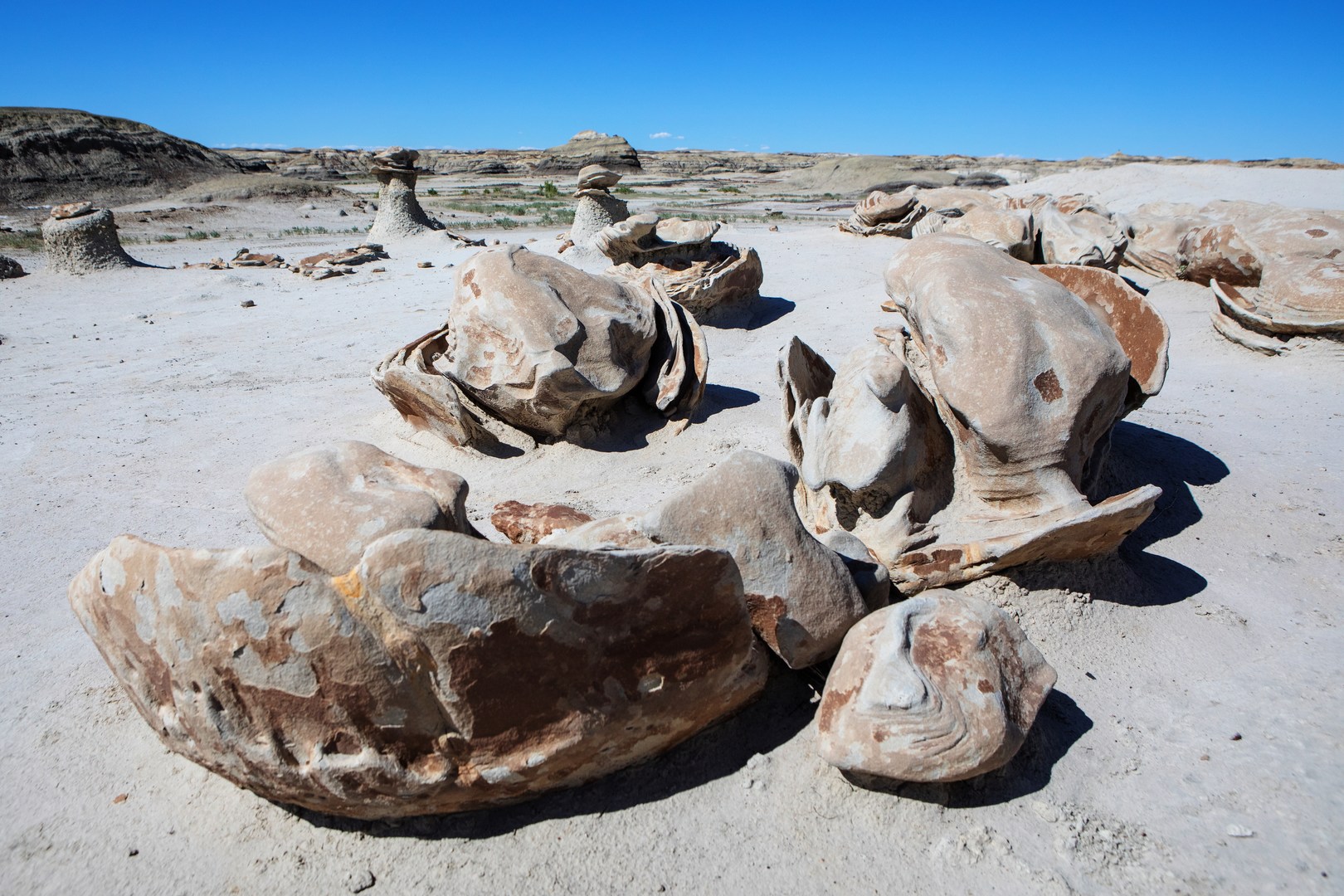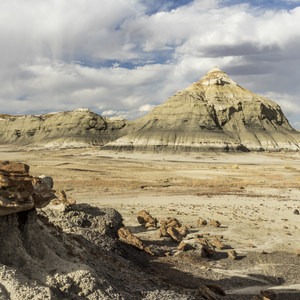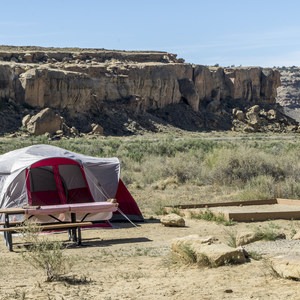You are here
The Bisti/De-Na-Zin Wilderness Area in northwest New Mexico offers fantastic views of gnarly rock formations, and hikes here are a treasure hunt for hikers who try to find them. The hike is mostly flat and can be anywhere from 2 to 12 miles depending on how far you venture. The hike documented here is just over 5 miles. While not a physically demanding hike, it can be very hot, especially in summer months. There are no facilities along the hike, no water, and no marked trails, so bring plenty of water, sunscreen, a hat, and a GPS or map.
Starting on the trailhead by the parking lot, the easiest way to navigate the badlands is by following the creek east-northeast. If you get lost, your best bet is to follow the creek west until you get to the road.
Some formations are fairly well known, such as the Bisti Arch (which is rather small when compared to other arches in the western U.S.). You will find that some have been given different names, which can make finding them a bit confusing. Yet there are so many hoodoos, rock gardens, and interesting features that it is worth it to take some time to just wander and discover.
Starting from the south parking lot and hiking along the creek, the first hoodoos are about 1 mile away. The Bisti Arch is about 1.7 miles from the trailhead. At about 1.9 miles you will find the Cracked Eggs, also known as Dinosaur Eggs and a few other names. These are not really eggs, but rather eroded rocks that look like alien forms. You can find petrified trees and stumps within a half-mile from the Cracked Eggs, both east and north of that spot. Note that hiking on the hills can be disorienting, so it is advised to use a GPS. There is another spot to park about 1.5 miles north of the main trailhead. That spot offers closer access to some formations, but it is harder to find.
The Bisti/De-Na-Zin Wilderness Area, established in 1984, covers about 60 square miles. The area was once covered with a lush forest on a river delta some 70 million years ago that poured into an ancient inland sea. After volcanic eruptions, the uplift of the Colorado Plateau, and thousands of years of water and wind erosion, there are still clues of the ancient forest and creatures that inhabited it in the form of fossils and petrified wood, ranging from small pieces to stumps and whole tree trunks. Please admire those beautiful rocks and leave them where they are so that many more generations can appreciate this great site. Note that it is prohibited to climb fragile formations or light campfires in the badlands.
Wildlife is present in the area, but it is not very abundant given the harsh conditions. Some birds of prey, including eagles, hawks, and falcons, use the cliffs as nesting sites. Please do not approach these birds or their nests during the nesting season from February to July. Otherwise they may abandon the nest and endanger their eggs or young hatchlings.
The best time of the year to visit the Bisti Badlands is spring and fall. It can be extremely hot during the day, so it is best to hike early or late in the day—plus, those times generally offer better light to photograph the rock formations and their long shadows when the sun is low on the horizon.
Aside from these badlands, there are many other interesting sites in northwest New Mexico. In particular, Shiprock, an impressive volcanic mountain, is worth the additional 75-mile drive.
Logistics + Planning
Current Weather: Powered by Dark Sky


































Comments
Sign In and share them.